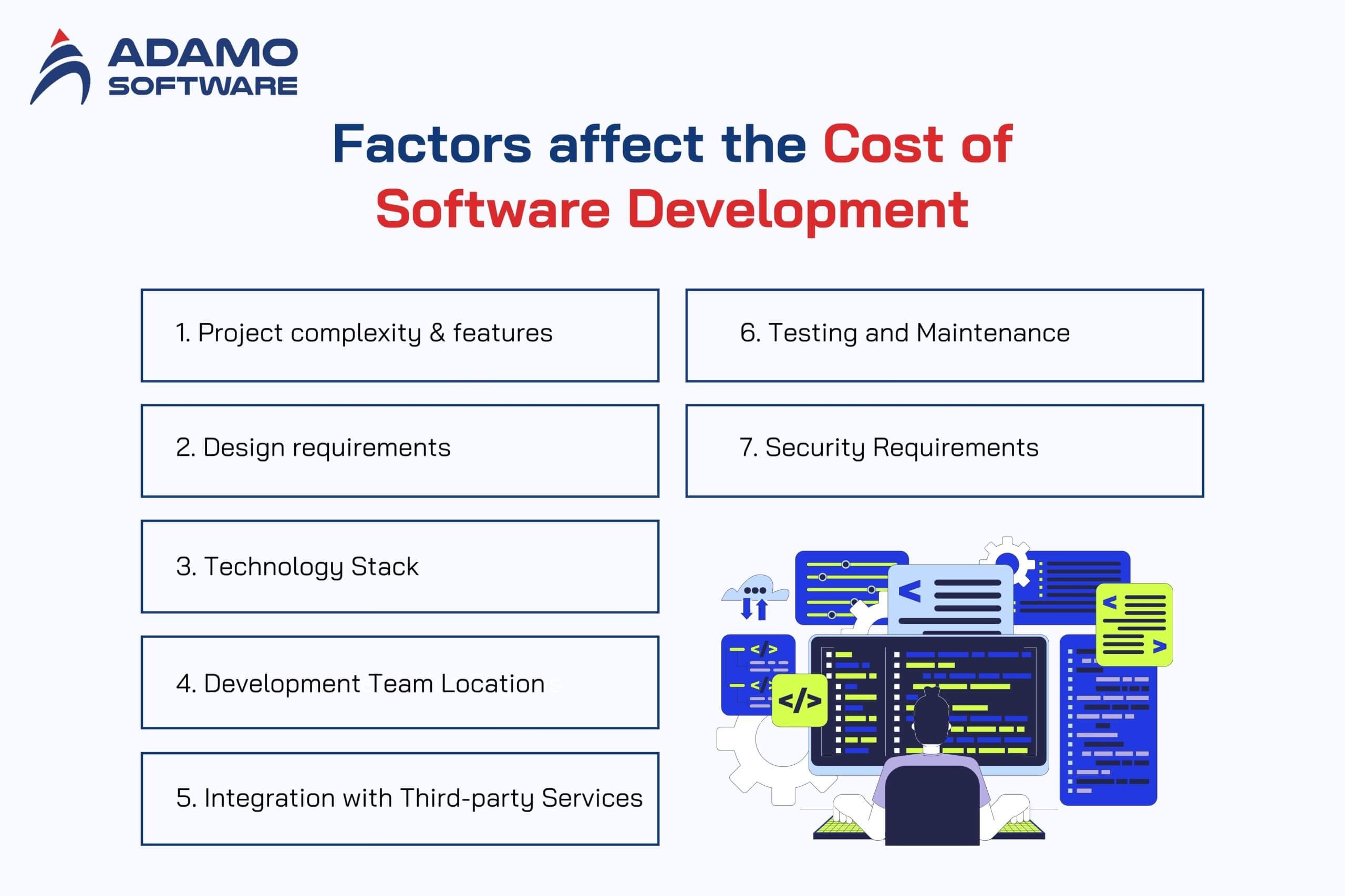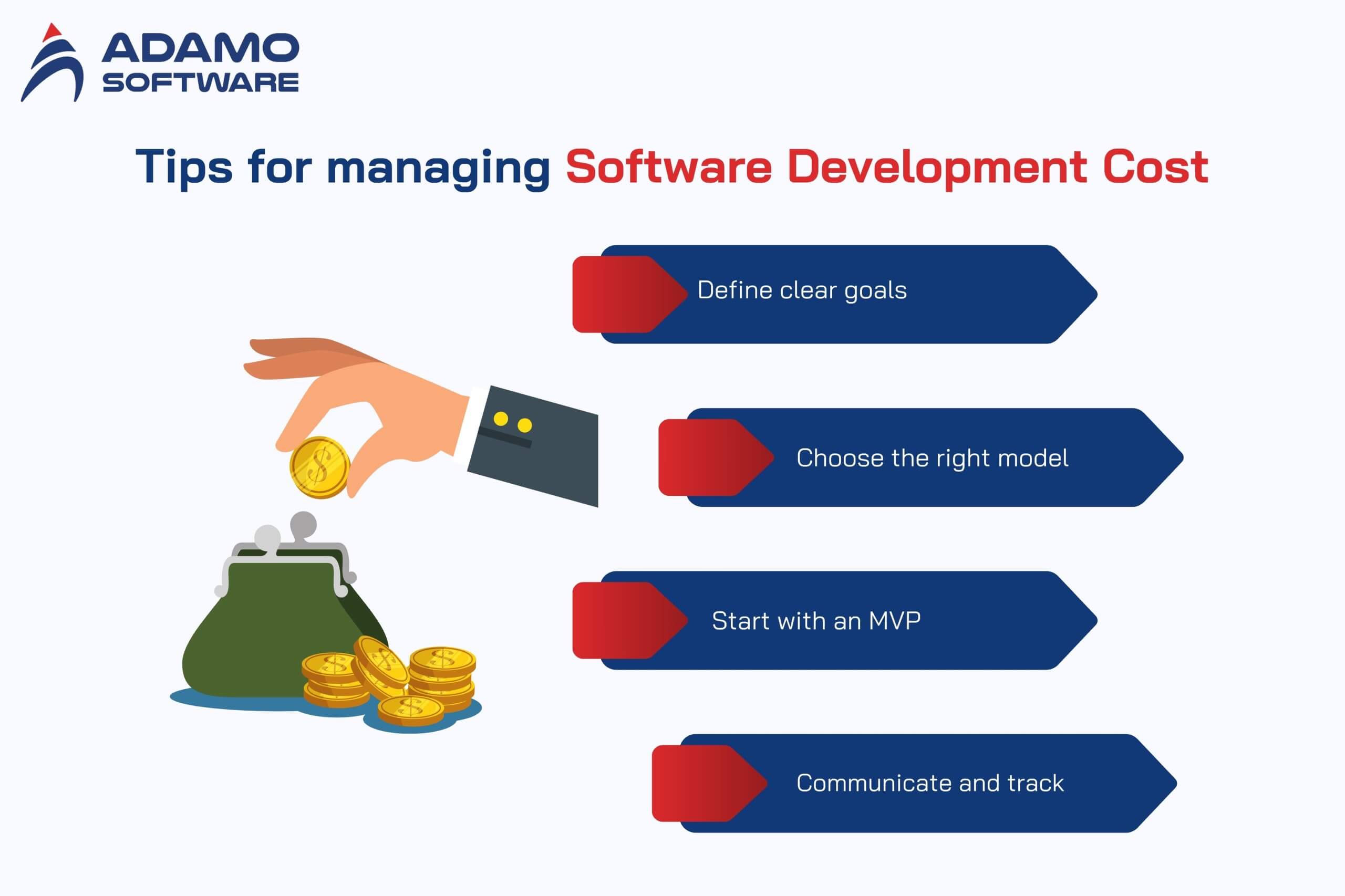Cost of Software Development: Key factors & Budgeting Advice

Learn what affects the cost of software development, explore pricing models, and get tips to manage your budget effectively for any project size.
In the modern era of a rapidly digital environment, nearly any company requires a software program to survive the competition. Software is no longer an optional expense in how businesses operate and expand. It can be a mobile application, a website, or a home-built enterprise application. What is the cost of software development is one of the first questions before embarking on any project. This is an important question to ask in both small organizations and major companies. The answer can be very different and can depend on numerous aspects.
A report released by Deloitte in 2023 showed that 67% of companies raised their budgets to improve digital development. The purpose is to meet the customers’ requirements and business objectives. However, without strategized planning, most of these firms experience delays or an overrun. This is why knowing the costs of software development, what prompts it, how to determine it, and how to control it is essential to a successful project. In this article, we shall examine key factors that impact cost, the payment models, estimating budget methods, and tips to make finance go further. As you are developing a small or a big project, learning how software development costs might take off some time, money, and effort.
I. Factors that affect the Cost of Software Development
Numerous factors affect the cost of software development. Every decision you take starting from the nature of the features you require to the place where you will have your developers can either add to or cut down the ultimate cost. The following are key elements that determine the cost of your project:

- Project Complexity and Features – More advanced features require more time and money to build.
- Design Requirements – Custom and user-friendly designs increase cost due to research and testing.
- Technology Stack – Some tools and programming languages cost more and require expert skills.
- Development Team Location – Developers from different countries charge very different rates.
- Integration with Third-party Services – Extra connections (like payment or cloud tools) add to the budget.
- Testing and Maintenance – Post-launch updates and support are part of the long-term development cost.
- Security Requirements – Software with sensitive data needs strong protection, which costs more.
1. Project Complexity and Features
The less simple a software product becomes, the longer the time and the resources it requires. The simpler an app is and the features it possesses the lower it will be in cost as compared to one with real-time updates, payments, and artificial intelligence capabilities. The time required to develop an app with basic functionality is approximately 3 months and up to 6-12 months or even more in case of a complex app (Statista, 2023). The longer the time, the higher the cost becomes.
2. Design Requirements
Design is reduced to the looks of something and influences the user experience and the performance. Creating a good user interface (UI/UX) is usually research-driven-, wireframe- and test-driven. The extensiveness and the personalized design would increase the cost of software development. Basic templates are cheaper, but a more interactive design, which is unique, may jack up prices.
3. Technology Stack
Time and cost are influenced by technology choices such as JavaScript, Python, or blockchain. The current technology might demand experienced programmers with a higher fee. Some technologies are licensed to use or require special tools, which increases the cost.
4. Development Team Location
Depending on where your team is based, the overall cost of software development can swing. Developers based in North America or Western Europe tend to be more expensive to hire than teams in Southeast Asia or Eastern Europe. To illustrate, it is possible to consider U.S. developers who can charge 100-150/hour, whereas in Vietnam or Ukraine, their prices are between 20-50/hour.
Ready to Outsource?
Discover how we can transform your business with expert IT solutions.
5. Integration with Third-party Services
The fact that your software must integrate with a payment gateway, CRM system, or cloud storage can be an expensive aspect. Such integrations may include APIs, testing, and continual updates.
6. Testing and Maintenance
Software requires support, fixes for bugs, and updates after the launch. These recurring expenses should be kept in mind right at the onset. They determine the overall cost of software development in the long run.
7. Security Requirements
Some apps handle sensitive information, such as finance or healthcare apps and they should adhere to the strict rules of security. Security (e.g. encryption) or adherence with regulations like GDPR or HIPAA may add additional time and cost to the development process.
All these factors influence the cost of developing software in their ways. This is why planning, goal understanding, and selecting the right team are essential in achieving the best value for your money.
II. Payment models for Software Development to consider
Depending on the payment model you use, a large difference can be seen in the cost management of software development. All these models suit various requirements, schedules, and prices. Making a wrong decision may delay things or bring some hidden costs. The right decision may put you in control and understand what is happening. The most popular models are listed below. They are used by the business in its collaboration with the software development teams:

- Fixed Price Model – Best for small projects with clear requirements.
- Time and Material (T&M) Model – Ideal for flexible projects with changing needs.
- Dedicated Team Model – Good for long-term development with ongoing tasks.
- Milestone-Based Payments – Useful for tracking progress in stages.
- Hybrid Model – Combines the strengths of multiple models.
1. Fixed Price Model
In this model, the scope and the cost determination are done in advance. It is quite powerful when you are certain about what you want, and the features will not be shifting. This model ensures that the cost of software development remains immutable, whereas it is not flexible. The contract will have to be rewritten in case of a change in need and this may delay it.
2. Time and Material (T&M) Model
You only pay for what you consume in real time and resources. This model can be used in those projects whose requirements might change. You can modify things, schedules, or priorities as the project progresses. Nevertheless, this method is more difficult to forecast the total cost of software development. The above-mentioned model is currently preferred in more than 55% of the digital products built, because of its flexibility.
3. Dedicated Team Model
You appoint a complete team that does nothing but work on your project. The model will be suitable for long-term requirements or systems that will be constantly updated. You can control the team as your own employees and this is more. Something that this may do but over the long-term run is raise the price of developing software. However, in the end, which product is better will only time tell.
4. Milestone-Based Payments
In this case, you divide the project into stages, and only then do you pay the money. This model aids in the monitoring of the work. It introduces responsibility and ensures the team is on schedule. It also shares the cost of software development throughout the phases and budgeting is easy.
5. Hybrid Model
Some corporations mix up two or more models to suit them. As an example, fixed pricing at the initial stages of planning and T&M in subsequent ones. This model provides such advantages as stability and flexibility. It should be well managed as a project. If not, a project may have confusion or even scope creep that may increase the cost of the whole software development.
The knowledge of these models can assist you in making better decisions to suit your objectives and prevent unnecessary expenses. All the models have their good and bad sides. Matching your type of project with the one that will serve you best will cost you less in software development with better outcomes.
Also read:
Top Software Development Companies: 7 leaders in Vietnam
Custom Software Development Services: Who needs it and Why
III. Formula for estimating the cost of software development services
Software is a development that requires estimation of its cost before the commencement of any project. It allows companies to draft and stay within a budget, not spend more than they should, and establish adequate expectations. An estimate is never going to be perfect. However, there exists an easy and commonly utilized formula that will provide a decent initial value:
Software Development Cost = Total Development Time × Hourly Rate
The formula can be used on many software projects and not just web apps, mobile apps, and enterprise projects. You must know the two major parts to use their goodness:
1. Total Development Time
This is in terms of hours (or weeks/months) that your project will consume. The time of getting a seamless experience depends on the app’s size and complexity, the number of features, and the extent to which there is a requirement for testing or integration. As an example, a minimal mobile application might be completed in 500h-800h, and a complete enterprise system would take 3,000+h. Statista (2023) reports an average of 7 months of development time for a cross-platform app.
2. Hourly Rate
This is the per-hour rate of your development team. The rates are different according to location and skill. As an example, programmers in North America could cost 100 -150/hour. This could be 25 -60/hours in Eastern Europe or Asia. The number of hours is also related to the developer’s role, as a senior programmer or UI/UX designer normally charges more than a junior coder.
To get a better estimate, you should also factor in:
- Project management and communication hours
- Quality assurance and testing time
- Post-launch support and updates
- Licensing, tools, or cloud service costs
Although the simplified formula gives you a starting point, a breakdown of detailed facts will provide you with a better picture of the overall cost of software development. On sites such as Clutch or GoodFirms, you can find free calculators and average price guidelines. Most startups apply them to create a realistic budget.
To summarize, it is important to know how to estimate the cost of software development. This helps to prevent the stunts and make a better plan for success.
IV. 4 tips for managing Software Development Cost
Software development cost management does not only mean establishing a budget. The part of being smart throughout decisions is also concerning. Most projects have cost overruns due to a lack of goal clarity, bad planning, or late changes. However, it is possible to minimize the risks and cut expenses by acting strategically instead of reducing the quality. The following are four practical methods to manage the cost of software development and to optimize it:

- Define clear goals – Set clear requirements to avoid confusion and extra work.
- Choose the right model – Pick a payment method that fits your project’s size and flexibility.
- Start with an MVP – Build core features first to save money and test faster.
- Communicate and track – Regular updates help catch issues early and avoid delays.
1. Define Clear Project Goals from the Start
A clear vision makes your team avoid working on unnecessary things and can easily stay focused. The developers find themselves spending more time revising features when they are not clear. This brings in some non-obvious expenses. A report released by PMI in 2023 using Pulse of the Profession statistics stated that 37% of IT projects fail because requirements are not well-defined. It is good to lay down your scope in the early stages. This will moderate the cost of software design.
2. Choose the Right Development Model
Projects with other schemes of payment and projects employ better models. A Time & Material model may be appropriate to you if your idea is still developing. A Fixed Price model could save money, though, in the case of short and fixed-scope projects. By aligning your project type with appropriate models, you limit the wastages and reduce the costs of software development.
3. Start with an MVP (Minimum Viable Product)
Rather than construct the complete structure you can make a simple prototype. An MVP allows testing the key functions, receiving feedback, and making changes as quickly as possible. You will avoid going overboard with features that might not be necessary for the users. With MVPs, you can also launch your product and improve your budget more efficiently, making software development cost-effective and sleek.
4. Communicate Regularly and Track Progress
Routine developer-to-staker feedback will assist in early detection of the problems. When using such tools as Jira or Trello, it is easy to keep up with the tasks. Cases of surprises end when every person is aware of the situation. Periodic check-ups are also effective to make sure the project remains well on schedule and on budget. That is an actual cost-cutter in software creation.
By adopting these strategies businesses can control time, money, and resources in a good way. It does not mean you want to spend less, but it is the issue of spending smartly. And when taken right, the above steps can enable you to manage the cost of software development without compromising its quality or value.
V. Final thoughts

At Adamo Software, we know that one of the most burning issues for businesses of any kind is software development cost. It is a matter of saving every dollar whether you are a small startup that is creating your first product or even an enterprise that is upgrading your system. This is why we follow the practice of developing flexible, transparent, and efficient development plans that correspond with your objectives and budget. As our experience demonstrates, control over the cost begins with clear communication, a high level of collaboration, and the decision to take the proper approach at the initial stages.
Our idea is that the cost of software development needs to correspond to real value not the time and effort but the long-term advantages. Through high-quality technical expertise and clever project management, we can save our clients up to 30% of their development costs as compared to traditional outsourcing. Having the right strategy, technology, and partner, presenting cost-efficient software development. A wise investment rather than a seller is possible. We would like to assist you in constructing solutions that not only work but are also economical.











